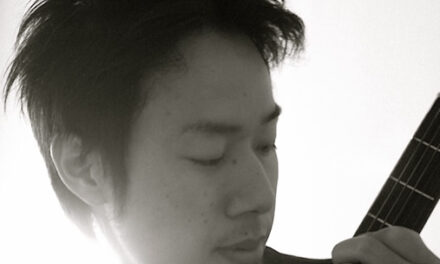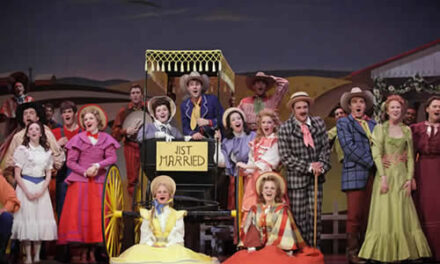One of the first things I did upon taking my seat in Memorial Hall for this Carolina Performing Arts performance on the campus of the University of North Carolina at Chapel Hill was to engage my imagination in full force. Two hundred ninety-four Good Fridays ago (April 7, 1724 to be exact), the real human being Johann Sebastian Bach directed and premiered his recently composed St. John Passion at Saint Nicholas Church in Leipzig. As the audience awaited the entrance of the orchestra and chorus, in European fashion where they all come on stage at once right before the performance, I tried to envision Bach himself coming on stage to conduct this masterpiece, which at the time was considered just another aspect of the job description in his first year as music director.
The Saint John Passion is one of two surviving passions or oratorios by Bach (although Bach’s obituary, written by his son C.P.E. Bach, mentions five passion settings!), and is generally less performed than his Saint Matthew Passion. It is written for four-part chorus, vocal soloists both separate from and part of the chorus, and orchestra that, in this performance, uses exclusively authentic Baroque era instruments. The libretto itself is partially anonymous, but it is meant to narrate the passion of Christ using the Gospel of John. It is a complete mix of all musical textual adaptations including arias, recitatives, choruses and chorales using familiar hymn tunes of the day. Its timing structure is a bit unusual in that the second part is more than twice as long as the first.
The performers have a long and celebrated history. The choir, originally called Gaechinger Kantorei Stuttgart, was founded in 1954 by Helmut Rilling, and now is directed by Hans-Christoph Rademann. The more recently formed Baroque orchestra of the Internationale Bachakademie is the other leg of this meticulously authentic Baroque ensemble together known as Gaechinger Cantorey.
The “star” of this performance, if one can use such a pedestrian word, is the tenor evangelist, who, mostly in recitatives, exactly followed the words of the Bible. Inexplicably, he and the other soloists’ names were omitted from the program. However, his was a spectacular performance in every conceivable way. His pure tenor voice with pinpoint intonation and enunciation of the original German was the reliable foundation of the whole work. He also was the only one on stage to perform his entire part completely from memory. Basically, all the rest, whether choruses or soloists (including Jesus), is commentary and reaction to the evangelist’s biblical texts.
The orchestral players and choral singers were of quite satisfying forces, something not always the case in pursuit of a music director’s concept of “authenticity.” The chorus numbered about thirty-five and the strings were nicely filled out. The choral singing was simply sublime: completely unified so that at no time did one voice stick out, rhythmically precise, consonants crisp and synchronized. The chorales were especially moving and profound, so much so that a complete evening of those alone would have more than satisfied this writer.
In addition to the beautiful playing of the musicians comprising the orchestra, the instruments themselves were all fascinating to watch both as kind of museum pieces as well as living, breathing “modern” instruments. Most prominent was a Baroque bassoon towering above the orchestra like the Empire State Building in the 1930s. I knew these were longer than the modern ones, but this one may have been twelve feet high! The Baroque flutes and oboes were a feast for the eyes as well as ears. The lute, played by Magnus Andersson, added unique sonorities to the recitatives, although it was completely inaudible in tutti passages. Because of several factors, including the use of gut strings, the stringed instruments are meant to be of a softer quality than their modern counterparts, but they seemed to be drowned out during louder choral singing, even while they appeared to be sawing away with great exuberance. This was even more noticeable in a violin duo with just a soloist, where one needed to really strain to hear the instruments.
One of the characteristics of authentic Baroque performance practice is the judicious or even complete non-use of vibrato in both singing and playing. The alto soloist – again, name unknown – began her first solo sounding like she just came over from singing Verdi, but she soon altered her style to fit the prevailing sound.
As much as a complete opera, Bach’s Saint John Passion is enormously dependent on the text, as the audience could clearly see in the eight, dense double-sided pages provided in both the original German and English translation. It would have greatly enhanced the audience’s experience to have provided the English in a display above the stage, as is done in nearly all operas today. In addition to not having your head buried in the program, it would have prevented the annoyingly unmusical sound of a thousand pages turning.
Despite what could have been some minor improvements in a few non-musical aspects of this performance, it was truly an experience of such profundity and reverence that one could truly feel the presence of its creator, and possibly the Creator.












